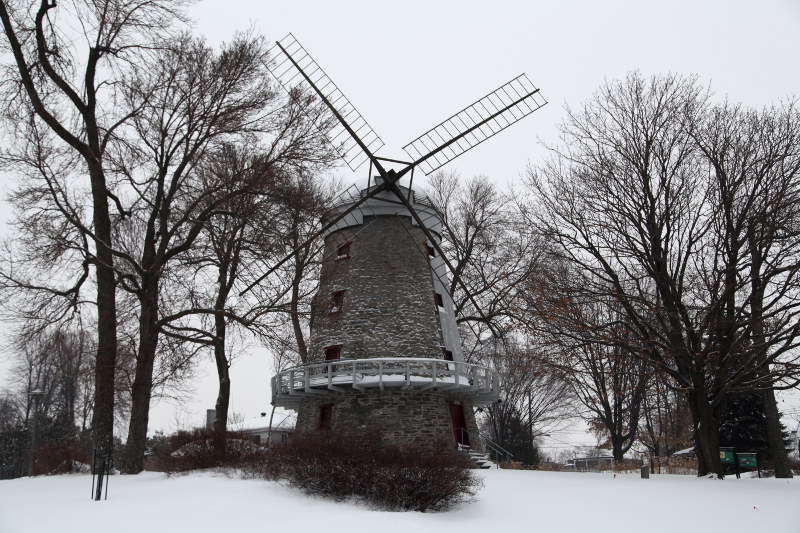It’s easy to find this imposing windmill overlooking one end of Lac Saint-Louis (part of the St. Lawrence). Simply drive along Boulevard LaSalle between Lachine and the Canal de l’aqueduc and at some point, it will pop into your line of vision. It’s pretty hard to miss.
The best and most detailed research on this mill can be found on this site. The highlights…
A wooden mill was built here in 1815 and then re-built using stone in 1827 by a young Scotsman named William Fleming; its very presence challenged the Sulpicians, the French seignioral system, and their monopoly over the flour milling industry in Québec.
The first mill was the subject of a decade long court battle that pitted the French Sulpicians (a society of diocesan priests founded in Paris in 1641) and a fledgeling Canadian government against each other. The fight ended in stalemate and opened the door for other millers to build mills on their property.
In perusing historic websites, a bit of history caught my attention: “…the Fleming Mill is the only Anglo-Saxon-style windmill still in existence in Québec.” What exactly does this mean? What is an Anglo-Saxon-style windmill? How is an Anglo-Saxon mill different from the French mills? And… “still”… were there once more?
I don’t know what “Anglo-Saxon-style windmill” means but in looking at the windmill, there are some obvious differences between it and the others we visited.
Broadly, both are “tower mills” meaning the cap of the structure rotates to move the sails to the wind. In a “post mill,” the entire building revolves around a post in the centre.
On the back (I assume it’s the back) there is no pole but rather a chain and pulley system that is used for turning the rotating cap.
Categorically, the sails are much higher in the LaSalle mill because it is a smock/stage mill, which means the sails are higher off the ground so they can catch more wind; there is a “balcony” or a “stage” that runs around the mill for workers to stand on while they work on the sails.
The other mills that I’ve seen are ground sailer mills meaning you can work on the sails from the ground.
All the Québec mills are unified in their purpose: to grind flour and grains. In general, mills are built for a whole variety of jobs: grinding food, moving water, grinding the raw materials used in paint, sawing wood, etc.
If you’re interested in visiting this particular moulin à vent, the city offers free tours of the exterior of the mill every Sunday in the summer (July & August / starts 3:00 p.m.). Before this (starting around 2pm in July only) is a “country theatre” show in the surrounding Stinson Park.
